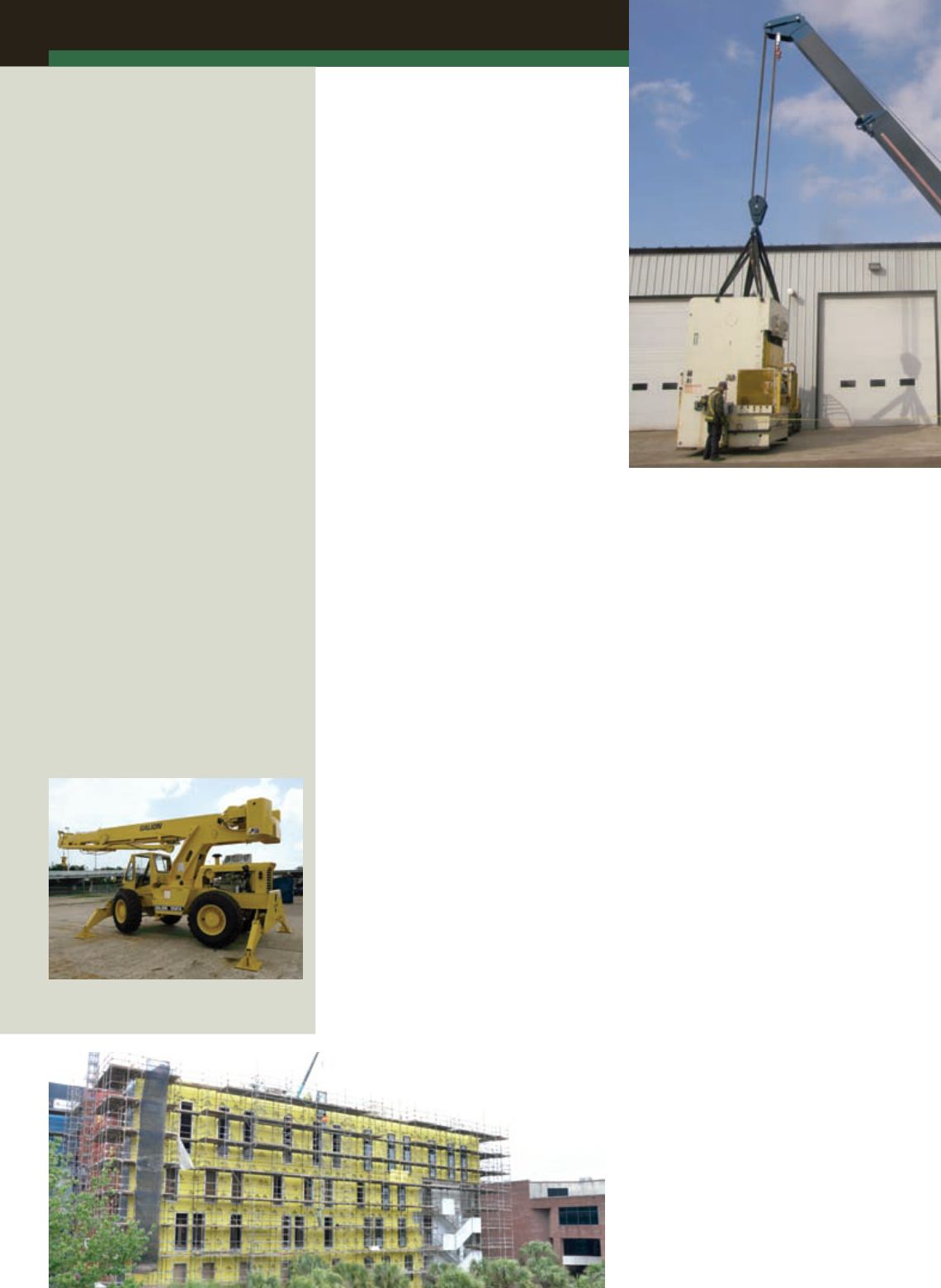
36
not been produced for several years,
although Manitex/Badger is introducing the
M150 as a Galion replacement. Williams
estimates there are a few thousand Galions
operating in the U.S.
“The Galion crane was last made by
Komatsu-Dresser, and I believe production
was discontinued about 12 years ago,” says
Williams. “The ACV market demand for the
Galion 150F remains strong, and each year
this crane, in a good operating condition,
becomes harder to locate for sale,”
Williams says. “Any Galion that has recently
completed the WHECO REMAN or WHECO
SLEP program has a FMV value equal to
or greater than the sum of the core value
plus the cost of the particular SLEP, which
is significantly less than replacement with a
new crane.”
The extent of repairs that WHECO is
making to the Galion units is extensive.
“Typically, when WHECO receives a Galion
down cab it is no longer a certifiable crane,”
he says. “It will require every part of it to be
inspected and repaired at some level, either
remanufactured or replaced with new.”
This includes all new electrical and power
transmission equipment, a new radiator,
brakes, all new hydraulic hoses, new seats
and repainting, after body damage repair
and rust remediation.
“We also replace the tires, the
decals, wire rope and add all new HVAC
equipment,” Williams says. “The engines
and transmissions are rebuilt by the OEM
of those components.”
machine with them or sell it.”
Forster says the Lift Systems 75-ton
Mobilifts and 75-ton TriLifters are the
most in demand machines.
The 75-ton Mobilift will lift 50 tons off
of the hook block and 75 tons off of the
picking eyes and will drive with a full load.
The mobile line from Lift Systems does
not employ outriggers in its designs,
reducing overall required footprint. Radio
remote is also an option feature.
Recently the company received an order
for the first 110-ton capacity TriLifter
which will be used in a permanent nuclear
application.
Expanding market
Rich Caudill, product manager for Jekko
USA, agrees the market is expanding.
“Our biggest business comes from
the curtain wall contractors that install
the panels on high-rise buildings,” says
Caudill.
He says Jekko cranes are being purchased
and rented by utility companies, power
generation companies and even coal
burning facilities. A growing market is the
film industry, which uses Jekko cranes to
build sets and assist with filming. There
are Jekko cranes on the sets of several
major adventure movies being shot at the
present time, he says.
“Glazing companies love these cranes
because they can pick up the panel, walk it
to the side of the building and then hold it
while workers install it,” he says.
Jekko crawlers are designed with
multiple outrigger configurations and
they are operated with wireless remote
control. All Jekko cranes come with full
LMI systems.
Jekko’s best-selling cranes are the MPK
20 and the SPD 360. The MPK 20 has a
capacity of 4,400 pounds and it’s a full pick
and carry machine. The SPD 360 has a
capacity of 3,968 pounds.
“All of our track cranes can be
completely electric powered,” says Caudill.
“The SPD 360 up to the SPX 1040 can
be diesel powered but have a dual power
option. They are designed with a power
pack that you plug into a power source
so that you can run them by the flip of a
switch on electric power.”
Growing recognition
Maeda USA’s Tony Inman says Maeda
cranes are getting more recognition.
“We definitely have traction in the
market,” he says.
Maeda hangs its hat on the safety features
of its cranes.
“We strongly feel we go above and
beyond when it comes to the features of
the crane that lead to safety,” he says. “In
the design and features of these cranes,
safety was an integral part. Especially since
these cranes are often used by people who
are not highly experienced crane people,
although very experienced people are also
running these cranes.”
Moment limiter systems are standard on
all units.
“We see more use in commercial
construction and in the trades – steel, glass
and glazing and curtain wall industry,” he
says. “Architects and engineers are using
more glass and bigger glass and the curtain
wall panels are larger. Our cranes are ideal
for this work.”
Beyond the commercial work, Inman
says the cranes are in demand in all sectors
of the energy industry.
As far as demand, the smallest crane in
the Maeda line, the “true mini-crane,” is
the most popular, says Inman.
Maeda produces three models, the
Using a Maeda mini-crane, a window crew
works independently of other trades on the
building rather than wait on a tower crane to
lift up materials.
ACT
JULY 2013
GALION BONANZA
PRODUCT FOCUS
INDUSTRIAL CRANES
WHECO remanufactures like-new Galions
for a crane rental company.


